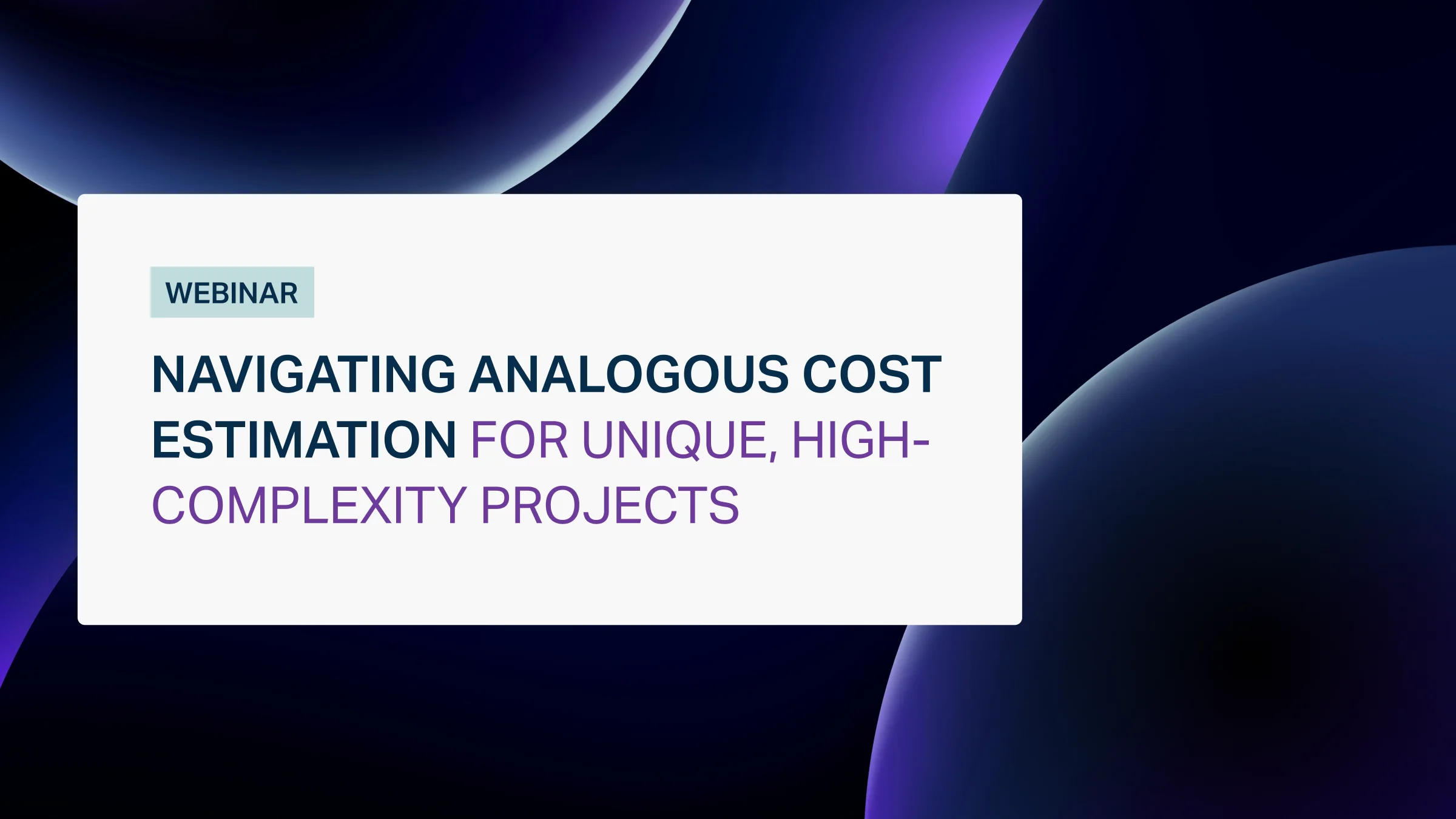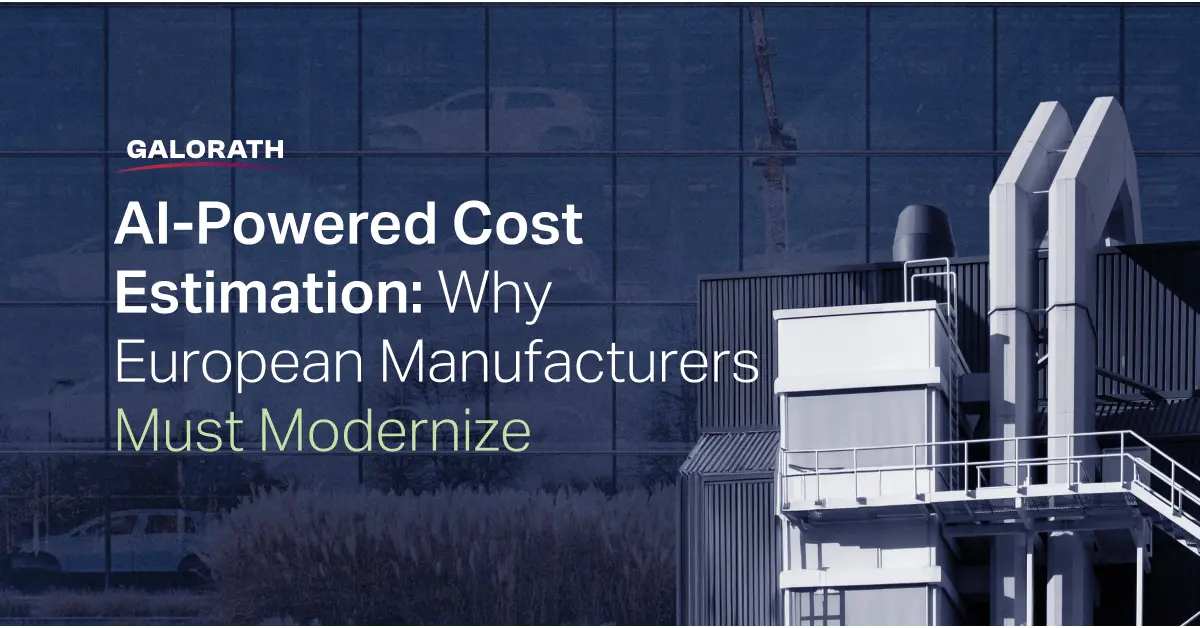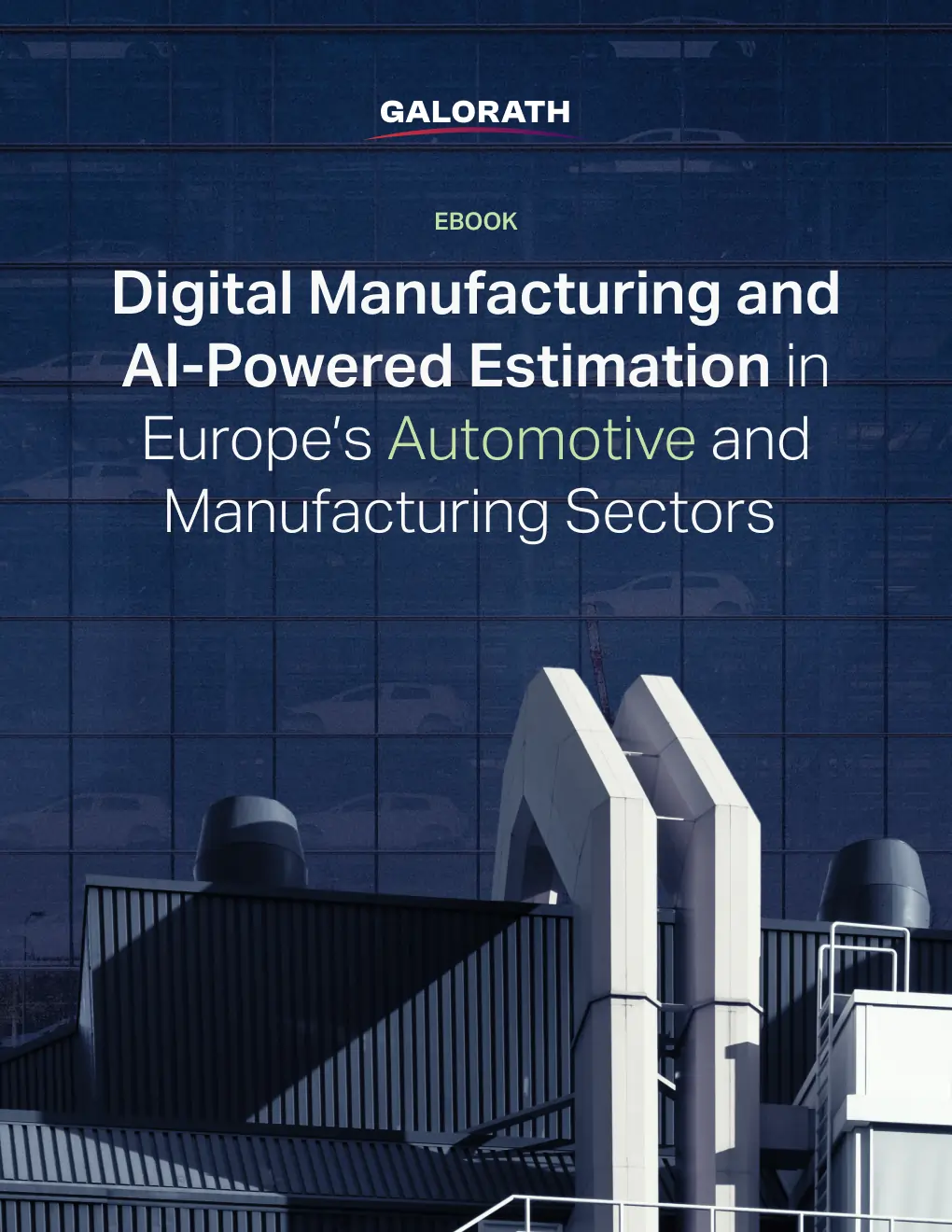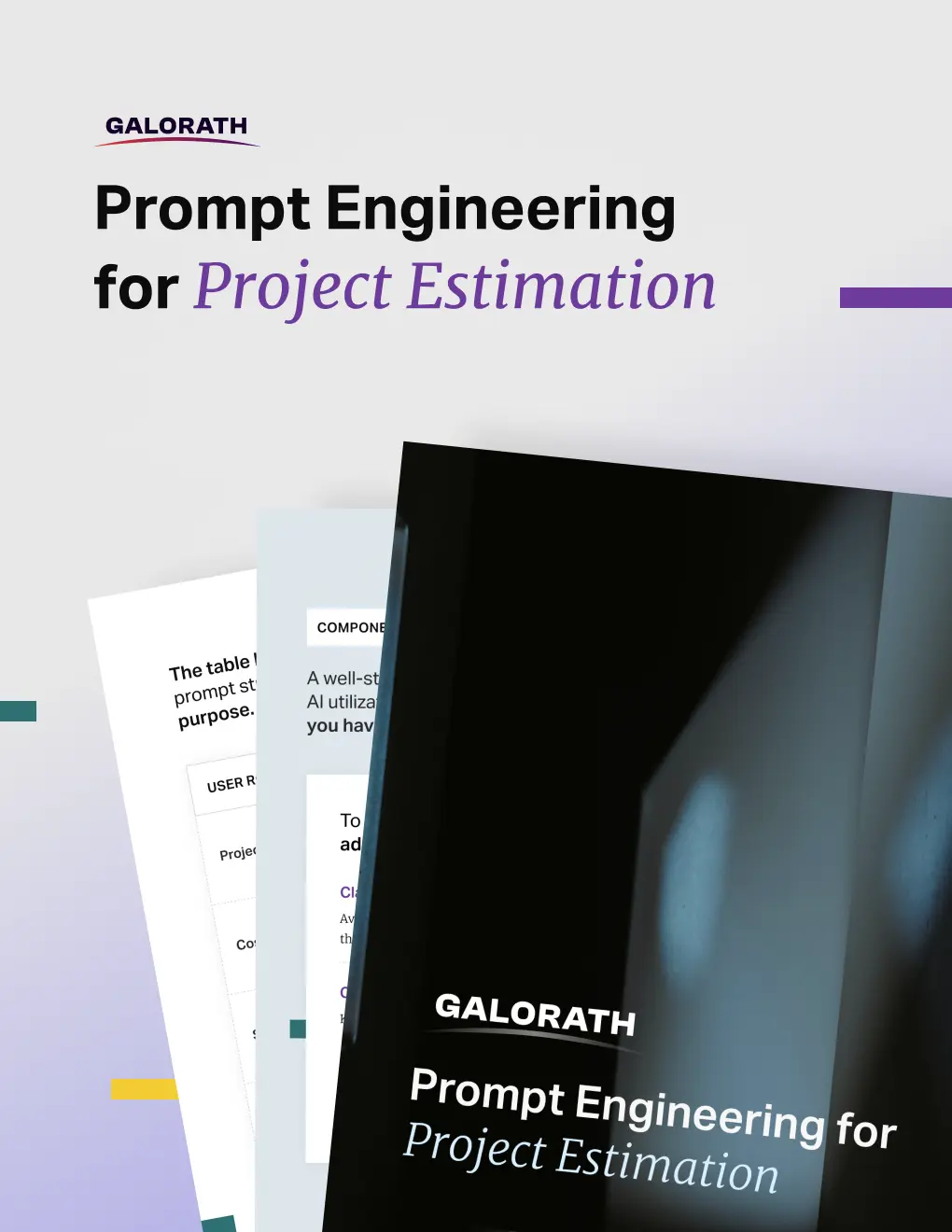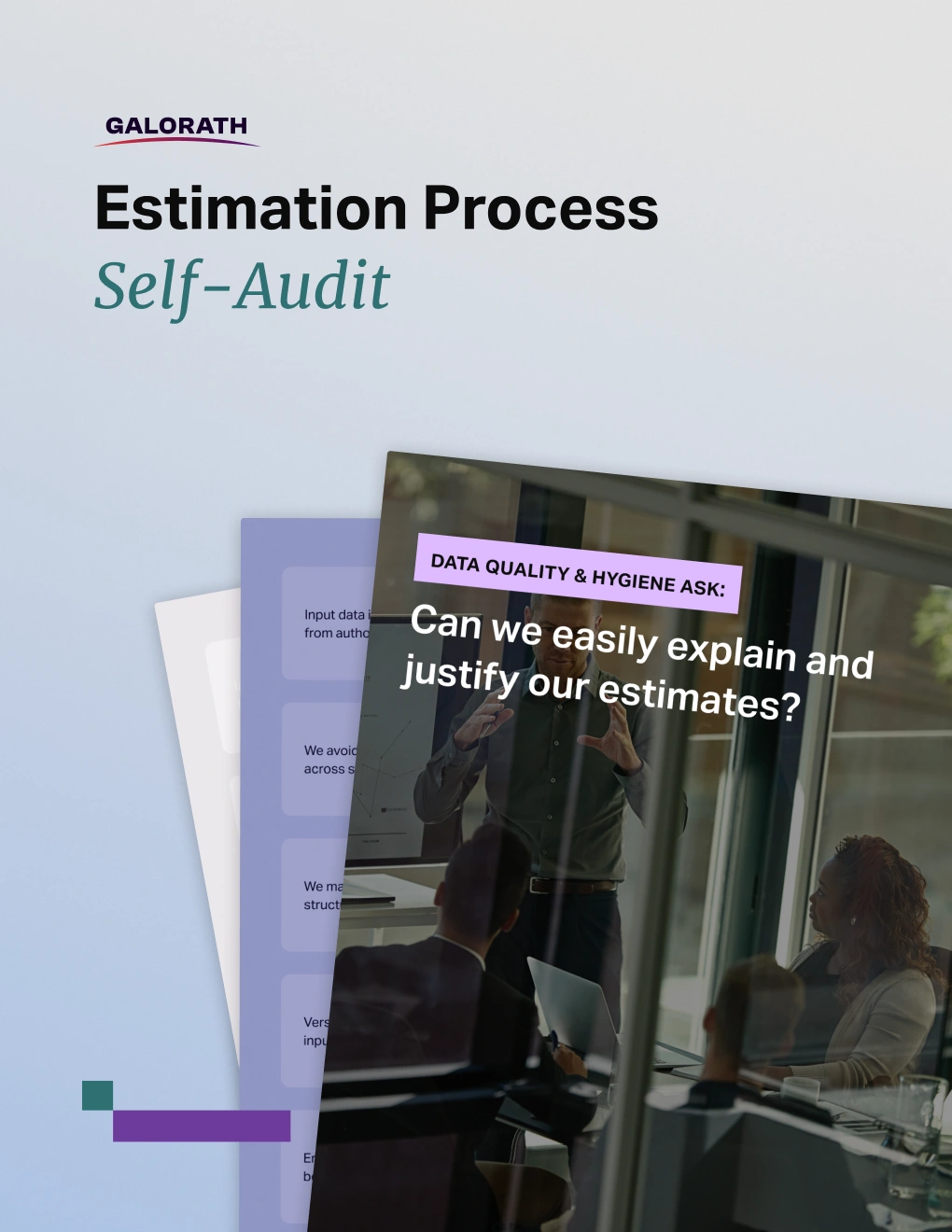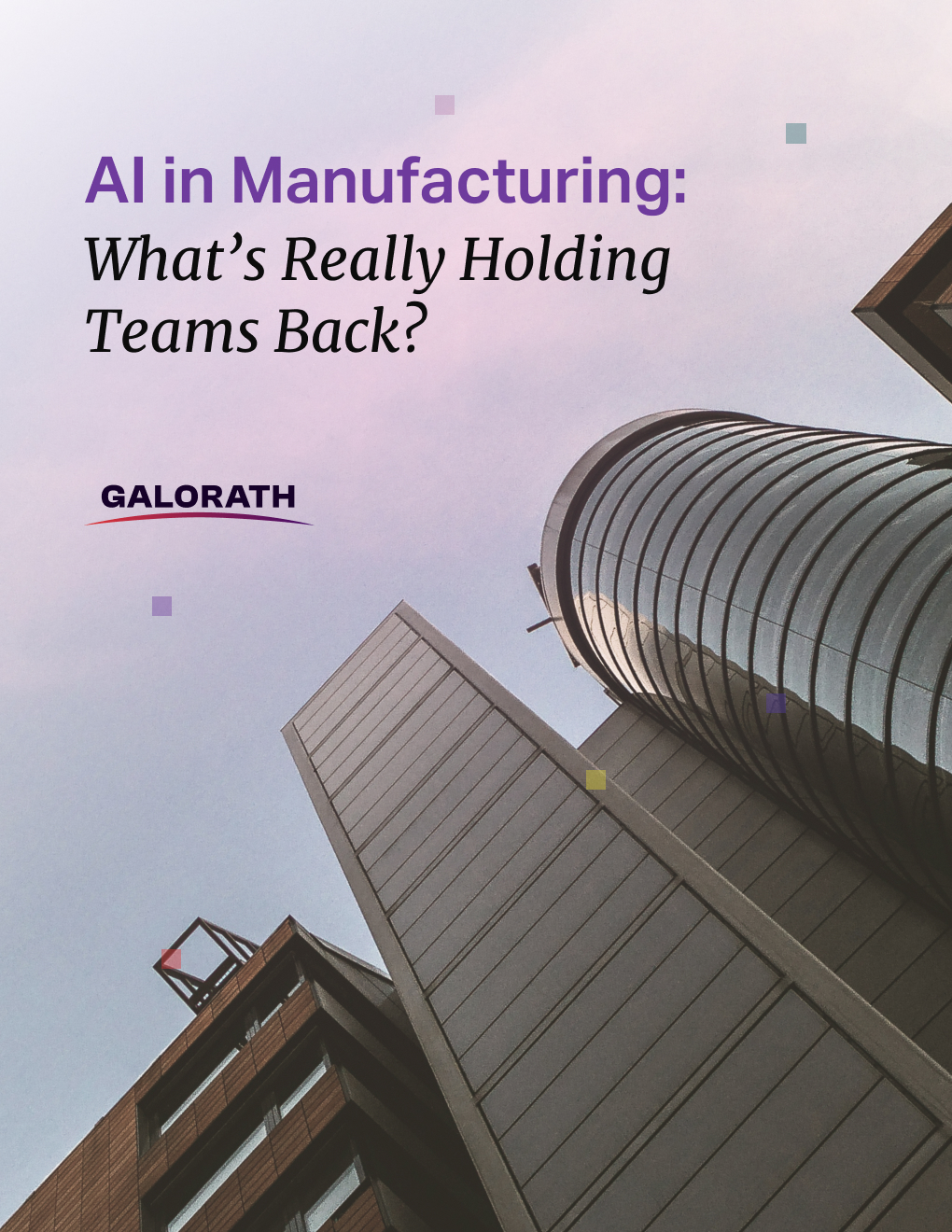Mastering Cost Risk with the CRED Model: A New Approach to Managing Uncertainty
A cost driver is any factor that causes a change in the cost of an activity or product. Identifying and understanding cost drivers is essential for accurate costing, pricing, and profitability analysis, as they directly influence the allocation of costs to products or services.
Cost drivers can range from production volume, material costs, and labor hours to machine usage and operational complexity. In manufacturing, recognizing key cost drivers helps optimize resources and control expenses.
The debate between Activity-Based Costing (ABC) and traditional costing methods centers on how accurately each model assigns costs to products, with ABC providing a more precise allocation of indirect costs based on activities rather than volume.
What is a Cost Driver?
A cost driver is any factor that causes a change in the cost of an activity, product, or service and it is the underlying cause that drives how much money is spent to produce something.
As noted by Robert S. Kaplan from Harvard Business School in “Cost and Effect: Using Integrated Cost Systems to Drive Profitability and Performance“, cost drivers are central to understanding cost behaviors and play a critical role in efficient resource allocation.
For example, machine hours can be a cost driver in manufacturing, as the more machine hours required to produce a product, the higher the cost. Similarly, setup time in production can also drive costs, especially if frequent setups are required for different product batches.
Cost Driver vs Cost Object
The main difference between a cost driver and a cost object is that a cost driver causes costs to change, such as energy usage increasing expenses, while a cost object is the unit being measured, like a product or batch, and is assigned costs based on the resources it uses.
To clarify the difference between cost drivers and cost objects, here’s a quick comparison:
| Term | Definition | Example |
| Cost Driver | A factor that causes the cost to change or increase. | Machine hours → drives cost of production for Product A. |
| Cost Object | The item or activity being costed, for which costs are assigned. | Product A → costed based on machine hours, labor, materials. |
Why Cost Drivers Matter?
Cost drivers matter because they identify the root causes of costs, allowing businesses to allocate resources efficiently, reduce waste, and improve profitability. By understanding what drives expenses, companies can make targeted decisions that lower costs and enhance performance across products, services, or departments.
Here are the key benefits of understanding and managing cost drivers:
- Accurate Allocation: Ensures that costs are assigned to products or services based on the activities that actually drive the costs.
- Better Pricing: Helps businesses set more accurate prices by understanding what drives the cost of production or service delivery.
- Cost Control: Identifies areas where costs can be reduced by optimizing processes linked to cost drivers.
- Budgeting/Forecasting: Improves the accuracy of financial planning by forecasting the impact of cost drivers on future expenses.
- Product Mix Decisions: Helps companies make informed decisions about which products to prioritize, based on their cost-driving factors and profitability.
- Margin Improvement: By effectively managing cost drivers, businesses can reduce costs and improve profit margins.
Direct vs Indirect Drivers
Direct Drivers are those factors that can be directly linked to the production of goods or services. Direct drives typically include:
- Labor hours: Directly tied to the time spent producing a product.
- Units produced: Each unit adds a specific cost for materials or labor.
Indirect Drivers are factors that influence costs but are not directly tied to a specific product or service. Indirect drivers usually include:
- Maintenance cycles: The frequency of equipment servicing impacts overhead costs.
- Energy use: The more energy consumed in production, the higher the overall cost.
- Quality assurance (QA) inspections: More inspections lead to higher indirect costs related to quality control.
Indirect drivers Impact on Overhead Allocation: Indirect drivers, like maintenance or energy use, contribute to overhead, which needs to be allocated across products or services. The more indirect the activities are, the more difficult it becomes to assign costs accurately, but they still impact overall cost structures.
Fixed vs Variable Drivers
Cost drivers can be classified into fixed and variable categories:
Fixed Drivers: These remain constant regardless of the level of production or activity. Examples include:
- Facility costs (e.g., rent, utilities)
- Salaries of permanent staff
Variable Drivers: These fluctuate based on the level of production or activity. Examples include:
- Materials costs (e.g., raw materials)
- Energy consumption (e.g., electricity for machinery)
Relevant Range Reminder: The relevant range is the level of activity within which a cost driver behaves consistently. Beyond this range, the cost behavior may change (e.g., fixed costs could become variable after a certain level of production).
Quick Calculation Examples:
- Fixed Driver: Rent is $5,000 per month, regardless of how much is produced. So, the rent remains the same whether you produce 100 or 1,000 units.
- Variable Driver: Material cost is $2 per unit. If you produce 500 units, the total cost for materials will be 500 units × $2 = $1,000.
Activity-Based Costing (ABC) & Drivers
Activity-Based Costing (ABC) is a method that assigns overhead costs more accurately by focusing on the activities that drive costs, rather than simply using a volume-based allocation.
As Thomas Stevenson explains in “Activity‐based Costing: An Emerging Tool for Industrial Marketing Decision Makers“, understanding what causes costs will provide a more accurate measure of the true cost of a product. Cost drivers are central to ABC because they help identify the true sources of costs, which in turn leads to more precise cost allocation.
By linking cost drivers to specific activities, ABC allows businesses to trace indirect costs directly to products, services, or activities.
This approach outperforms traditional volume-only cost allocation methods, especially when there are significant indirect costs, such as maintenance, quality assurance, and setup time, that vary based on the complexity of the production process.
Levels of Activity (Unit/Batch/Product/Facility)
In Activity-Based Costing, costs are assigned at different levels of activity. These levels help businesses assign costs to the appropriate driver based on the specific type of activity. Here’s an overview of each level:
Unit-Level Activities
These activities are directly tied to the production of each unit. For example, machine hours used for producing each unit or the direct labor required for each item. The cost driver at this level could be machine time, with costs allocated per unit produced.
Example: If a product requires 0.5 hours of machine time per unit, the machine hours become the cost driver at the unit level. If 100 units are produced, the machine cost is multiplied by 100 units.
Batch-Level Activities
These activities occur when producing a batch of units, regardless of how many units are in the batch. Setups per batch are a classic batch-level driver. The cost for setting up machines for a batch is incurred regardless of the number of units produced in that batch.
Example: If it takes 2 hours to set up a machine for a batch, and the machine setup costs are $100/hour, the total cost for the setup would be $200 for that batch. Whether you produce 10 units or 100 units, the cost of setting up the batch remains the same.
Product-Level Activities
These activities support the production of a specific product, but they are not dependent on the number of units or batches produced. Examples include activities like engineering change orders or product-specific design work. The costs are tied to the product, not the volume or batch size.
Example: If a product requires specific engineering change orders due to unique design features, the cost incurred from these changes is allocated based on the product level.
Facility-Level Activities
These activities support the overall production facility, such as plant rent or utilities. These costs do not directly tie to any single product or activity but are necessary to keep the facility operational. They are usually allocated across all products produced in the facility.
Example: The cost of plant rent/utilities is spread across all products made in the facility, often based on the square footage used or the proportion of total production capacity that a product consumes.
Structural & Organizational Drivers
In addition to the operational activity levels, structural and organizational drivers play a significant role in shaping the baseline costs of a company’s operations. These drivers are influenced by strategic decisions and the way an organization is structured.
Strategy-Driven Drivers
These include factors like scale, technology, and complexity. A company that expands its operations might face scale drivers that increase costs but spread them across more products.
For example, a company that invests in new technology or upgrades its production process will incur costs related to implementing and maintaining that technology, which can affect overhead.
Complexity drivers arise when a company offers a wide range of products, requiring more resources for product differentiation, quality control, and manufacturing flexibility.
Example: If a company adds new technology to automate production, the costs related to the new machinery and systems will increase fixed costs. However, these costs are spread across multiple products, reducing the cost per unit produced as the company scales up production.
Organization-Driven Drivers
These drivers stem from how the company organizes its operations.
Centralization of decision-making or skills within the workforce can elevate baseline costs, as specialized roles or centralized control systems might require additional resources or overhead to manage.
Example: A company that centralizes its operations may incur higher overhead costs due to the need for central management or coordination of activities, leading to additional labor costs, reporting, and communication requirements.
What are the common Cost Driver Categories?
Common cost driver categories include volume, transaction, duration, complexity, quality/returns, logistics distance, supplier terms, and compliance.
As noted by Z. Bokor, cost drivers are key factors in Activity-Based Costing (ABC) as they are the basis of cost allocations, and their correct identification plays a crucial role in improving financial performance and operational efficiency.
Volume Drivers (with examples)
Volume drivers are the factors that vary in direct proportion to the volume of activity, production, or service. The more you produce, the higher the associated costs. Common volume drivers include:
- Direct labor hours: The amount of labor required to produce a given number of units.
- Machine hours: The total time machines are used during production, which often drives maintenance, energy, and wear-and-tear costs.
- Units produced: The total number of units manufactured, directly influencing material costs and labor.
- Number of orders: The total number of orders processed, which impacts packaging, handling, and order fulfillment costs.
- Number of customers: A factor that can drive customer service and support costs, as well as logistics and distribution.
Allocation Base: These drivers typically use unit-based allocations (e.g., cost per unit, cost per order) to assign costs, and are often the most straightforward to monitor. For example, the cost of direct labor can be allocated based on the number of labor hours required for production.
Duration/Transaction Drivers
Duration drivers are associated with activities that consume resources over a specific time period, while transaction drivers are linked to individual actions or transactions. Examples include:
- Setup time: The time required to prepare equipment for production, which can significantly increase costs if frequent setups are needed.
- Inspection time: The time spent inspecting products, which adds to labor costs, especially if frequent quality checks are required.
- Handling/time per move: The amount of time spent moving products between stages in the production or distribution process.
- Purchase Orders (POs) processed: The administrative costs associated with processing POs can accumulate depending on the volume of orders.
- Returns processed: The time and resources needed to handle returns, including restocking and inspection.
Unit Price & Input Drivers
Unit price and input drivers are factors that affect the costs of inputs needed for production. These drivers change based on market fluctuations or internal decisions and can directly impact the cost of production:
- Wages: Fluctuations in labor costs due to wage rate changes or union agreements.
- Material prices: Changes in the cost of raw materials (e.g., steel, plastic, or chemicals) that directly affect the cost of production.
- Energy tariffs: Variations in energy rates (e.g., electricity, gas) can significantly impact manufacturing costs, particularly for energy-intensive industries.
- Logistics rates: Changes in transportation or delivery costs, which are influenced by fuel prices, shipping distances, and tariffs.
Monitoring and Hedging Ideas:
- Monitoring: Regularly track market prices for materials, wages, and energy to anticipate cost changes. Use data from suppliers and market reports to stay informed.
- Hedging: Companies can hedge against price fluctuations, especially for energy and materials, through long-term contracts or financial instruments like forward contracts or commodity futures. For example, securing fixed prices for materials or energy can stabilize input costs and improve financial forecasting.
Cost Drivers in Manufacturing
Cost drivers in manufacturing are the factors that directly impact the cost of production. Key drivers include machine hours, setup frequency, run speed, scrap rate, rework, energy consumption, and tooling wear.
As Gary Cokins from Cornell University explains, cost drivers in modern manufacturing environments can be identified as the factors that most directly impact the costs associated with production activities.
For example, more machine hours increase labor and maintenance costs, while faster run speeds may boost production but raise wear-and-tear costs.
Frequent setups add downtime and cost per unit. High scrap rates and rework also inflate costs by wasting materials and labor.
Energy consumption in manufacturing can be significant, especially in energy-intensive processes, and tooling wear leads to more frequent replacements or repairs.
Design Choices & the Ripple Effect
Design decisions like part geometry, tolerances, surface finish, and materials have a direct impact on manufacturing costs.
Complex part geometry requires more specialized equipment and labor, increasing production costs. Tight tolerances demand more precise machinery and inspections, further driving up costs.
A surface finish that requires additional processes increases labor and time. The material choice affects both production techniques and cost, with higher-end materials needing more expensive processes.
Design for Manufacturability (DFMA) can help lower costs by simplifying the design, reducing the number of components, and making production more efficient.
Process Optimization via Drivers
Using cost driver data allows manufacturers to optimize production. For instance, batching better reduces setup times, improving throughput. Reducing setup frequency and sequencing jobs efficiently cuts downtime and lowers tooling wear.
Adjusting run speeds based on product complexity can balance throughput with quality, ensuring the most efficient use of resources.
These optimizations lead to improved Overall Equipment Effectiveness (OEE), helping to reduce waste, increase output, and lower overall production costs.
Cost Drivers & Cost Control
Understanding cost drivers is crucial for effective cost control. By identifying specific drivers like machine hours, setup time, and scrap rates, businesses can target cost reduction more precisely.
As H.Johnston and R. Banker note in “An empirical study of cost drivers in the U.S. Airline Industry“, “I dentifying the right cost drivers is fundamental to reducing overhead costs and improving cost accuracy”.
Rather than applying blanket cuts across the board, companies can make driver-based actions to target the root causes of inefficiencies.
Similarly, adopting SMED (Single-Minute Exchange of Dies) to reduce setup times directly cuts downtime and increases productivity without sacrificing quality.
Budgeting, Forecasting & Sensitivity
Driver trends are essential for budgeting and cost forecasting. By tracking changes in key cost drivers, businesses can build more accurate rolling forecasts and scenario models.
For instance, if energy prices increase by ±10%, or if scrap rates increase by ±5%, businesses can predict the potential impact on costs and adjust budgets accordingly. Scenario models allow managers to simulate different outcomes based on trends in cost drivers, enabling them to make proactive adjustments and avoid surprises.
For example, a chart might show how an increase in energy prices affects overall costs, helping decision-makers prepare for potential budget overruns or identify areas to mitigate risk.
Procurement & Supplier Drivers
In procurement, key cost drivers include commodity indexes, MOQ, lead time, logistics distance, and currency fluctuations. Commodity indexes impact the cost of raw materials like steel or oil, while MOQ determines the cost based on order quantity.
Lead time affects how quickly goods are received, influencing production schedules and inventory costs.
Logistics distance adds to transportation costs, and currency changes can increase the cost of international purchases.
To negotiate better deals, use driver evidence—showing trends in commodity prices, lead times, or logistics costs to secure better terms, pricing, or delivery schedules from suppliers.
Logistics & Cost-to-Serve Drivers
Logistics drivers like drop density, delivery windows, route distance, returns rate, and special handling directly impact cost-to-serve. Higher drop density reduces transportation costs by enabling more stops per route.
Delivery windows can raise costs by requiring specific scheduling.
Longer route distances increase fuel and labor costs, while higher returns rates add costs for reverse logistics. Products requiring special handling increase delivery costs due to extra care needed.
These drivers affect overall cost-to-serve models, helping businesses optimize delivery efficiency and control costs by managing factors like delivery routes, return handling, and storage.
How to Identify the Right Cost Driver?
Identifying the right cost driver is crucial for effective Activity-Based Costing (ABC) and the process involves mapping activities, selecting potential drivers, and then choosing the one that best links to costs and is measurable and stable.
As A. Gunasekaran explains, an effective cost driver selection links costs directly to activities that consume resources, ensuring better cost control. Identifying the right cost driver is essential for accurate cost allocation and optimizing production. Here’s a 4 step approach for that:
1. Map Activities
Start by identifying all the activities involved in your process. This includes everything from setup time to production time and inspection. Understanding the entire process will help you pinpoint where costs are being incurred.
2. Shortlist Candidate Drivers
Based on the activities, shortlist potential drivers. These could be things like machine hours, material usage, or labor hours. Focus on factors that are likely to influence the costs in each activity.
3. Correlate with Cost
Next, analyze how each shortlisted driver correlates with the actual costs. For example, see if increasing machine hours increases the cost of maintenance or if higher scrap rates increase material costs.
4. Choose the Most Causal, Measurable, and Stable Driver
Finally, select the driver that is most directly linked to the cost (causal), measurable with available data (measurable), and stable over time (stable).
For example, machine hours may be a stable driver for a factory with consistent production runs, while energy consumption could be a fluctuating driver if machines’ energy usage varies greatly based on the type of product being made.
Data Collection & Tools
To identify and track cost drivers effectively, data collection is key. Here are tools and methods to gather data:
- ERP/MES Fields: Enterprise Resource Planning (ERP) and Manufacturing Execution Systems (MES) provide valuable data fields such as labor hours, machine time, production volume, and material usage that can be linked to cost drivers.
- Time Studies: Conducting time studies allows you to directly observe the time spent on various activities, helping to pinpoint areas where efficiency improvements are needed and identify key drivers.
- IoT Sensors: Internet of Things (IoT) sensors can provide real-time data on machine performance, energy consumption, and machine wear, all of which can serve as cost drivers.
- ABC Models: Activity-Based Costing (ABC) models are particularly useful in identifying indirect cost drivers by mapping overhead costs to specific activities based on actual consumption.
Tools and Software for Identifying Cost Drivers
While methodologies like Activity-Based Costing (ABC) offer structured ways to identify cost drivers, modern software solutions deliver the scalability, speed, and analytics required to operationalize this process across complex projects. Tools such as ERP systems, IoT-enabled sensors, and dedicated cost estimation platforms are critical in this effort. Among these, SEER by Galorath stands out for its ability not only to identify cost drivers but also to analyze, simulate, and optimize them within a comprehensive cost modeling environment.
How SEER by Galorath Helps with Cost Driver Analysis?
SEER provides a structured, data-rich platform that helps organizations evaluate and manage cost drivers across diverse project domains. Its calibrated, domain-specific models, spanning from software to hardware and manufacturing, allow users to trace estimated costs back to their root drivers.
This traceability empowers teams to understand where cost pressures originate and apply design, process, or sourcing changes to improve outcomes. By integrating cost driver analysis directly into its modeling workflow, SEER becomes a key enabler of informed, proactive cost management.
Identifying Cost Drivers
SEER’s detailed cost breakdowns help users pinpoint key cost drivers across various phases of a project. The platform maps resource consumption to specific outputs, making it easier to spot where costs accumulate and why.
Analyzing Cost Drivers
With SEER’s parametric estimating and historical data models, users can analyze how individual drivers, like labor hours, material usage, or machine time, impact overall costs. The platform highlights sensitivity relationships and identifies high-impact cost factors.
Optimizing Costs Based on Drivers
SEER allows teams to test trade-offs and simulate scenarios. By modifying input values for identified cost drivers, users can optimize for cost-efficiency without compromising on scope or quality.
Sensitivity Analysis for Driver Validation
One of SEER’s key strengths is its sensitivity analysis feature. It shows how changes in variables influence outcomes, helping validate which drivers are most critical and stable over time.
Cost Breakdown Analysis for Deeper Insight
SEER also provides granular cost breakdowns that tie directly to drivers. This level of transparency ensures that decision-makers have audit-ready documentation and rationale behind each estimate.
Cost Driver Formula for Accurate Allocation
To allocate costs accurately using cost drivers, you can apply a simple formula:
1. Rate = Cost Pool ÷ Driver Quantity
This formula calculates the cost rate per unit of the driver. The Cost Pool refers to the total costs being allocated (e.g., overhead, maintenance), and the Driver Quantity refers to the total quantity of the cost driver (e.g., machine hours, number of setups).
2. Cost Allocated = Rate × Driver Used
This formula calculates how much of the cost is assigned to each product or activity based on how much of the driver was used.
Let’s say you have a total cost pool of $10,000 for machine maintenance, and you are using machine hours as the cost driver.
- Cost Pool: $10,000
- Driver Quantity (Machine Hours): 2,000 machine hours
- Rate = $10,000 ÷ 2,000 = $5 per machine hour
Now, for two different SKUs:
- SKU A uses 500 machine hours.
- SKU B uses 1,000 machine hours.
To allocate the cost:
- Cost Allocated for SKU A = 500 machine hours × $5 = $2,500
- Cost Allocated for SKU B = 1,000 machine hours × $5 = $5,000
The total overhead cost of $10,000 is allocated based on how many machine hours each SKU uses.
Machine Setup Cost Allocation
Let’s take a look at another example using batch setups as the driver:
Let’s say you are allocating a total pool of $6,000 for setup costs, and batch setups are the cost driver.
- Cost Pool: $6,000 (setup costs for the month)
- Driver Quantity (Number of setups): 12 setups
- Rate = $6,000 ÷ 12 = $500 per setup
Now, for two SKUs:
- SKU A requires 2 setups.
- SKU B requires 3 setups.
To allocate the cost:
- Cost Allocated for SKU A = 2 setups × $500 = $1,000
- Cost Allocated for SKU B = 3 setups × $500 = $1,500
The total setup cost of $6,000 is allocated based on the number of setups each SKU requires.
KPI Suite for Driver Monitoring
To effectively monitor and control cost drivers, using Key Performance Indicators (KPIs) is essential. The following KPIs help track the efficiency of operations and ensure cost drivers are managed proactively:
- Setup hours per batch: Measures the time spent setting up equipment for each production run. This helps identify inefficiencies in setup processes.
- Energy kWh per unit: Tracks the energy consumed to produce each unit. This KPI is crucial for energy-intensive processes and helps manage energy costs.
- Scrap %: The percentage of products rejected as defective. A high scrap rate can indicate problems with quality control or production efficiency.
- Rework rate: The percentage of products that need to be reworked due to defects or quality issues. High rework rates increase labor and material costs.
- Complaints per 1,000 units: Measures the frequency of customer complaints per production batch, indicating product quality and customer satisfaction.
- Cost-to-serve %: Calculates the total cost of serving a customer, including production, logistics, and service costs. This helps businesses understand their profitability per customer.
- Freight per order: Tracks the cost of shipping per order, helping to optimize logistics and reduce unnecessary transportation costs.
Reducing High-Impact Drivers
To improve efficiency and reduce the impact of high-cost drivers, here are quick remedies for each:
Setups (Setup hours per batch)
Use SMED (Single-Minute Exchange of Dies) to minimize setup time between batches. This method focuses on standardizing and streamlining setup processes to reduce downtime and improve throughput.
Scrap %
Implement SPC (Statistical Process Control) to monitor and control production processes in real-time. By identifying deviations early, SPC helps reduce defects and minimize material waste.
Energy (Energy kWh per unit)
Shift to off-peak scheduling for energy-intensive processes to take advantage of lower electricity rates during off-peak hours. This reduces overall energy costs while maintaining production.
Returns (Complaints per 1,000 units)
Conduct root-cause quality analysis to identify the underlying causes of returns. Focus on improving the quality control process, addressing design or manufacturing issues that lead to defects, and reducing the return rate.
Governance: Driver Dictionary & Cadence
To ensure consistency and accuracy in cost driver management, establishing a Driver Dictionary is crucial. A Driver Dictionary is a standardized set of terms, definitions, and parameters that helps track and monitor the cost drivers used across the organization. Here’s how to set it up and manage it effectively:
Standardize Driver Names
Establish consistent naming conventions for each cost driver (e.g., setup time, machine hours, scrap rate) to avoid confusion. Use clear, descriptive names that everyone in the organization can easily understand and apply.
Assign Driver Owners
Each cost driver should have a designated owner who is responsible for monitoring, updating, and ensuring the accuracy of the driver data. Owners could be department heads, production managers, or data analysts depending on the specific driver (e.g., Energy kWh per unit may be owned by the facilities manager).
Update Frequency
Define how often driver data will be updated. For operational drivers (e.g., setup time, scrap rate), updating should be done monthly or quarterly to align with reporting cycles. For more dynamic drivers (e.g., energy consumption or material costs), it may be necessary to update data on a weekly or real-time basis.
Data Sources
Identify where the data for each driver will come from. For example, machine hours could be pulled from MES (Manufacturing Execution Systems) or ERP (Enterprise Resource Planning) systems, while scrap rates could be tracked through quality control reports. Ensuring a reliable and consistent data source is key to maintaining accurate cost driver tracking.
Review Rhythm
Set up a regular review process to assess the performance of the cost drivers. A monthly operations review can be used to evaluate how well cost drivers are performing and if any corrective actions are needed. During these reviews, the Driver Dictionary should be revisited to ensure definitions, ownership, and data sources are still relevant and aligned with business goals.
Frequenly Asked Questions about Cost Drivers
What are the types of cost drivers (with examples)?
Cost drivers include volume drivers (e.g., machine hours), transaction based drivers (e.g., purchase orders), duration based drivers (e.g., setup time), unit-level drivers (e.g., materials used per unit), batch-level drivers (e.g., inspections per batch), product-level drivers (e.g., engineering changes), and facility-level drivers (e.g., plant rent).
What are top 5 cost drivers in manufacturing?
The top drivers include machine hours, setup time, energy use, scrap/rework, and material handling moves. These affect maintenance, efficiency, power, waste, and logistics costs, and tracking them helps optimize production.
How to determine the right cost driver?
Select the cost driver with the strongest link to costs, based on reliable and measurable data. It should remain stable over time for effective cost allocation.
What is an activity cost driver?
An activity cost driver in ABC refers to an activity (e.g., inspection hours) that causes overhead costs to rise, which is then allocated to the products or services requiring that activity.
What are cost drivers in procurement?
In procurement, key drivers include commodity indexes, currency rates, MOQ, lead time, freight, and quality risk. Understanding these helps negotiate better terms and manage procurement costs.
What is the root cause of a cost driver?
The root cause of a cost driver is the underlying factor that increases costs, such as design complexity leading to longer setup times. Using tools like the 5 Whys can help identify and address the cause.
What are the three most common types of costs?
The three types of costs are direct costs (e.g., raw materials), indirect (overhead) costs (e.g., utilities), and opportunity costs (e.g., missed profit from alternative choices).
What are the four categories of cost in ABC?
In ABC, costs are classified as unit-level (e.g., direct labor), batch-level (e.g., setup costs), product-level (e.g., product design), and facility-level (e.g., rent).
How do cost drivers connect to cost control?
Cost drivers impact cost control by highlighting areas for improvement. Actions like reducing setup times, improving first-pass yield, or optimizing logistics can directly lower costs and improve profitability.

